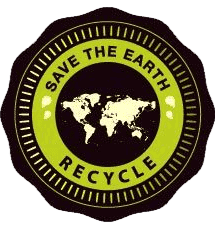The average American household wastes at least 10,000 gallons of water every year, according to the Environmental Protection Agency (EPA).
With the cost of water in the United States being on average $1,500 for 1,000 gallons, not only is the common usage of water bad for the planet but also for your bank balance. Any water left dripping, leaky faucets, or even running the shower too long is literally money going down the drain.
Eagle Dumpster Rental serves the community of Burtonsville, Maryland in Montgomery County, offering discount rates on rental dumpsters throughout the Burtonsville area.
According to EPA’s Watersense Program, a leaky faucet running at the rate of one drip a second can waste more than 3,000 gallons per year which can result in a fair bit of change going to waste too.
With these figures in mind, the idea of going green at home may be more appealing. It is possible to become more sustainable and conserve energy at home without breaking the bank.
How To Save Water At Home
- Install Low Flow Showerheads
An easy way to start your green journey is to install low flow showerheads in the bathrooms at home. This is something you can do yourself, as it can be as simple as screwing in a lightbulb, and showerheads can be purchased cheaply from most home improvement stores.
A low flow showerhead can save the average household around 2,600 gallons of water per year, according to the EPA.
- Install High-Efficiency Toilets
You can drastically reduce the whole family’s water usage by installing high-efficiency toilets across the home. This is something you can do at any point in your sustainable journey, but a good opportunity will be if you notice leaks or damage to your current toilet.
If you do see leaks coming from the toilet, do not ignore them, as this can be an expensive and damaging issue. The Express Sewer reports that a leaky toilet can waste around 200 gallons of water every day that it is left unattended, so now is the perfect time to replace your old model with a newer, more efficient toilet.
Watersense-labeled toilets are approved by the EPA and are reported to use 1.28 gallons or less per flush, which can save on average $110 per year from the toilet alone.
- Harvest Rainwater In Barrels
Harvesting rainwater is a great way to save money and conserve water as it allows you to collect water for free that can then be reused elsewhere.
For example, the average lawn requires 125 gallons of water per 1,000 square feet (as reported by Lowe’s Home Improvement). Instead of getting this water from the faucet, you can collect it for free from mother nature.
Rain barrels are an easy and cheap sustainable swap to make that can help you conserve water at home. You can buy rain barrels at home improvement stores, but you may also be able to get them for free if your neighborhood has a sustainable community program or similar initiatives for going green.
How To Save Energy At Home
- Switch To Energy Efficient Lightbulbs
When it comes to energy-efficient lightbulbs, you have two options depending on your budget.
Compact fluorescent lamps (CFLs) can last ten times longer than traditional lightbulbs and use significantly less energy with every use. Light-emitting diodes (LEDs) are more expensive but will last even longer, so they are worth the investment if you can afford them.
- Seal and Insulate Your Home
One of the most effective ways to conserve energy at home is to ensure that any cracks or holes throughout the property are sealed. This will help trap heat, allowing you to keep the home comfortable all year long without the additional use of heating systems.
You can also conserve energy by replacing your old wall insulation and caulk throughout the home, especially in drafty areas. Focus on window frames, around electrical sockets, and wall-mounted air conditioners, as these tend to be the draftiest spots in the house.
For additional sustainable improvements, consider weatherproofing your home and adding window seals to the doors and windows throughout your home, as this will help conserve energy even more.
- Install A Programmable Thermostat
Heating or cooling your home when you are not there is not only a waste of energy but also a waste of money. This is why installing a programmable thermostat at home is such an effective home improvement for sustainability, as it allows you to control the temperature of your home at any time or location.
With these kinds of controls, you can add timers to the heating and cooling of your home so you will have the desired temperature when you get in from work or get out of bed in the morning. Controls will also allow you to heat or cool your home only when it is necessary, which will help you save a lot of money throughout the year and also make your home greener.
Summary
Many of the sustainable home improvements you can do will help save energy and, therefore, money overall. If you want to become greener, the home is a good place to start, as there are a lot of areas that can be made more sustainable with some simple adjustments.
Taking care of your energy and water use is a great way to also reduce your spending, especially when it comes to the home. Save money and the planet through simple home adjustments, and everyone wins.
